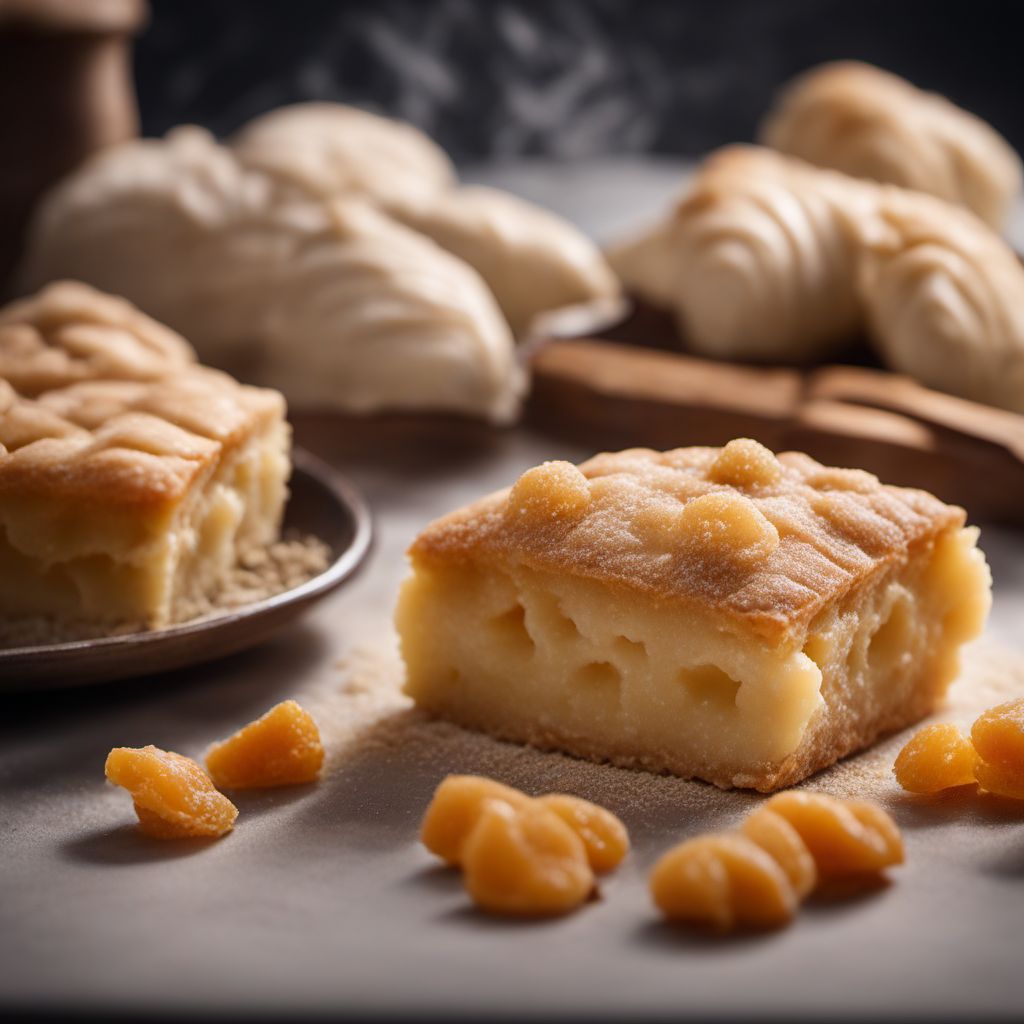
Ingredient
Short sweet pastry doughs (pate sucree, sablee)
Delicate Delights: Unveiling the Secrets of Short Sweet Pastry Doughs
Short sweet pastry doughs are delicate and crumbly, with a rich buttery flavor and a slightly sweet taste. They have a tender texture that melts in your mouth, and their appearance is golden and flaky when baked to perfection. These doughs are made by combining flour, butter, sugar, and sometimes eggs, resulting in a versatile base that can be shaped into various forms for a wide range of sweet treats.
Origins and history
Short sweet pastry doughs have their roots in French and European culinary traditions. Pate sucree, meaning "sweet paste" in French, is a classic French pastry dough that dates back to the 17th century. Sablee, which translates to "sandy" in French, originated in Normandy, France, and gained popularity in the 19th century. These doughs have since become staples in pastry-making around the world.
Nutritional information
Short sweet pastry doughs are high in calories and fat due to their butter content. They provide a source of energy and small amounts of essential nutrients, such as iron and vitamin A.
Allergens
Short sweet pastry doughs may contain allergens such as wheat, dairy (butter), and eggs.
How to select
When selecting short sweet pastry doughs, look for products that are fresh and have a light, golden color. Avoid doughs that appear overly greasy or have a strong odor. If purchasing pre-made dough, check the expiration date to ensure freshness.
Storage recommendations
To maintain the freshness and quality of short sweet pastry doughs, store them in an airtight container or wrap tightly in plastic wrap. They can be refrigerated for up to 3 days or frozen for up to 3 months.
How to produce
Amateur bakers can easily produce short sweet pastry doughs by following simple recipes that combine flour, butter, sugar, and sometimes eggs. The dough is typically mixed until it forms a crumbly texture, then chilled before rolling out and shaping.
Preparation tips
When working with short sweet pastry doughs, it is important to keep the ingredients and equipment cold to prevent the butter from melting too quickly. Additionally, blind baking the dough before adding fillings helps to ensure a crisp and flaky crust. Experiment with different fillings and toppings to create a variety of desserts, such as tarts, pies, and cookies.
Culinary uses
Short sweet pastry doughs are widely used in various desserts and pastries, including fruit tarts, pies, tartlets, cookies, and shortbread. They provide a buttery and tender base that complements both sweet and tangy fillings.
Availability
Short sweet pastry doughs are commonly available in grocery stores, specialty baking shops, and online retailers worldwide.



